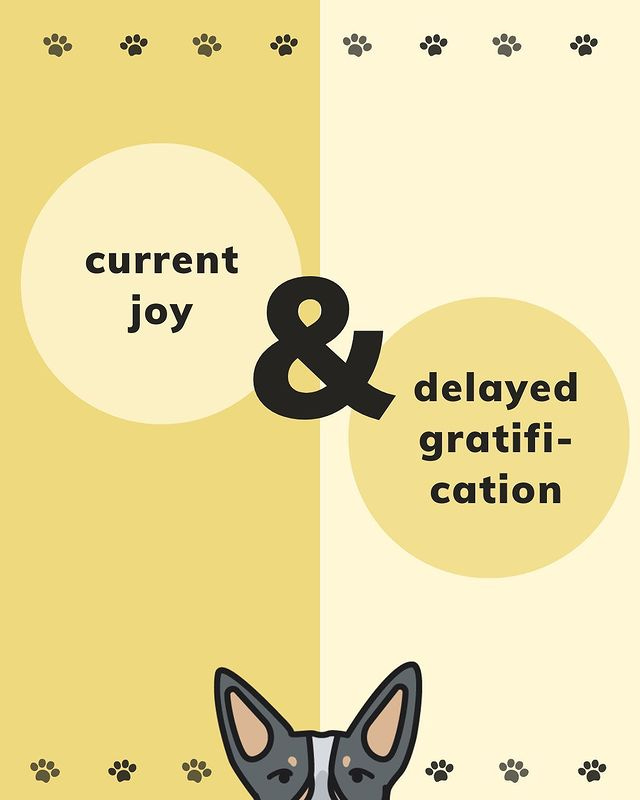Full circle as a dog lover (I’m a starry-eyed kid again?)
The way I feel about dog ownership today resembles how I felt about animals as a starry-eyed kid. But my perceptions are backed by knowledge and intention now.
It’s like I’ve been meeting my younger self, seeing the good in her approach, and reaching out a hand to point a slightly different angle. Saying “you’re on the right track… but let’s expand on it.”
TLDR Instagram post summary
The below Instagram post sums up this blog’s key ideas. (And has a few favorite photos of kid me with some baby animals for good measure 😉)
How I felt about dogs as a little kid who didn’t know better
Simple friendship
I thought all animals should want to be my friend. And “friend” is absolutely the right word—I considered my relationships with my childhood pets to be similar to those with my childhood classmates.
Cuddles and love
I lit up at the prospect of interacting with a creature who wasn’t a human. Any animal was cute and cuddly in my mind! (Yes, reptiles too. I wanted them to snuggle me just as much.)
Not much empathy
The same way I craved interactions with pets… I assumed everyone else around me did, too. I allowed my childhood bichons to approach other people without invitation and could never understand why someone might be afraid of dogs.
Ultimate over romanticization
All in all, I over romanticized animals. Think a Disney-inspired perception of loyal man’s best friend. I dreamed of perfectly getting along with endless critter friends, never experiencing any conflict, and seamlessly moving through the world together. I failed to consider what ingrained traits made all these animals different from each other (or what interactions would actually be best for them).
How my dog ownership views changed as I got into the training space
Greater respect for other people
One of the first things I realized as I started training my family’s husky, a few years before adopting Scout, was that not everyone is comfortable around dogs. This led me to really prioritize structure and control as a dog owner. I wanted to give us a good name!
Structure and control
That wasn’t the only reason I leaned hard into the idea of “being in charge”. For a while I came to see dogs far more as wild animals than the childhood friends I’d imagined. I felt that I needed to control my dog’s resources and restrict her access to the environment in order to be relevant to her.
Ego
I hate admitting this, but it’s true: I also wanted to believe I was “better” than people who took a more casual approach to dog ownership. It felt good to be going out of my way to make things technical. Sacrificing some of the simple joys of connecting with another species (by making our relationship transactional rather than fundamentally social) gave me a strange sense of martyr-ish satisfaction.
“Necessary” distance
I ultimately distanced myself from my dog in an attempt to avoid unproductive anthropomorphism and achieve training success.
How I try to bring the “best of both worlds” together today
It’s like I was Starry-Eyed Dog-Lover Haley, and then I was Slightly-Cynical-Dog-Training-Perfectionist Haley, and now I’m Best-of-Both-Worlds Haley. (Or so I like to think.)
Things little me, before ever diving into the dog training and ownership space, would love about my current approach:
Social bond
The social bond I have with Scout as two creatures—as two friends—is the most important part of our life together. You can read more on my dog-owner relationship values here.
Joy and magic
I revel in the absolute magic of building a trusting relationship with a member of a different species. Like, how cool is that?! I think it’s all too easy to forget how few animals regularly build long-term, cross-species bonds—but we do it with dogs all the time. And it’s mutual.
More on that in this podcast episode.
Fun!
I prioritize having fun with my dog. Playing. Laughing. Moving through the world like children!
But unlike when I was a kid, all these sentiments are now grounded in or tempered with:
Respect for others
Respect for other pets and people in shared spaces. Greater empathy. Less entitlement (or perhaps just less obliviousness).
Research
More accurate understanding of my canine’s needs as a domestic dog. I know she’s not a robot or a mind reader or a teddy bear or a wolf.
Balance
Balance of delayed gratification and immediate joy. Yes, we consider what feels good—but we don’t only think about the present moment.
Some specific examples of how this evolution plays out
I allow—and encourage!—my dog to get joy from sources that aren’t me. That might mean interacting with other people, exploring the environment, enjoying food for free… This is a lot like my childhood dog ownership, except today I do consider competing reinforcers and think critically about how to set her up for success.
I offer Scout plenty of freedom to move and made her own decisions on tools like a harness and flexi lead (or long line) combination. When I was younger, I simply couldn’t imagine why it wouldn’t be okay for a dog to run off leash or sniff around as they pleased. Today I prioritize that biological fulfillment while also making sure the environment is safe for it, we’re respectful to other people, and my dog can indeed disengage from stimuli or pop into a heel command if needed.
I prioritize back-and-forth communication. I listen to Scout’s requests as opposed to seeking a one-way relationship where I’m always in “control”—but we also work hard to make sure she’s able to take my non-negotiable direction when needed.
I ultimately respect the technical aspects of dog training (like reward markers and timing, operant conditioning quadrants, and so on) without getting lost in them (we have plenty of unstructured moments just existing as friends).














